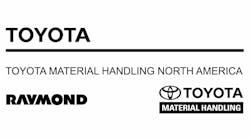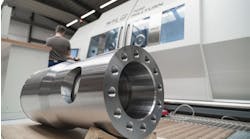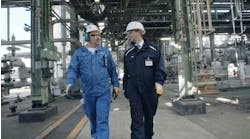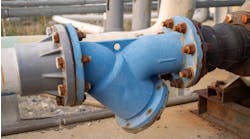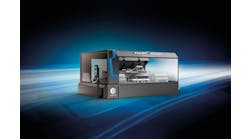SMS-Elotherm’s patented, “soft zone-free” method for scan hardening ring gears and other turbine parts improves strength and wear resistance.
Wind power remains one of the various energy alternatives that excites investors, and windenergy projects continue to draw support from utility companies – sometimes with financial support from government authorities. So, it’s no surprise that manufacturers continue to look for ways to fulfill industrial demand for wind turbines.
“With United States being the world’s leading producer of wind power at 31,000 megawatts a year, ahead of Germany and Spain, the demand for wind turbine bearings and slewing rings is likely to increase dramatically,” according to SMS-Elotherm North America general manager George Burnet.
SMS-Elotherm has patented a soft zone-free method for scan-hardening wind turbine ring gears, slewing rings, and bearing raceways. It’s a process that the developer of high-performance induction heating and heat-treating systems claims will improve the strength and wear resistance of rotary joints responsible for
controlling the motion of turbine blades. “Through induction, bearings and rings can be hardened to withstand the harshest load environments off-shore and on land,” Burnet explained.
The new inductive scan hardening involves two scanning heads that start at a common point but travel in opposite direction along the workpiece circumference to heat and quench the ring. Each scanning head operates independently with its own inductor coil, quenching spray, and servo positioning system.
Inductive scan hardening begins with two scanning heads in a common start position. Each scanning head operates independently with its own inductor coil, quenching spray, and servo positioning system. After initial heating, the two heads travel in opposite directions along the workpiece circumference to heat and quench the ring. At the end of their trajectories, the heads come together to complete the scan hardening process with no remaining soft zone.
“Independent scanning heads provide a cost-effective solution for hardening workpieces of any size and require minimal peak input power,” according to SMS-Elotherm North America George Burnet.
For hardening double-row ball and roller raceways, the SMS-Elotherm Twin Inductor Scan Head (patentpending) simultaneously hardens both raceways in large slewing rings, effectively doubling productivity.
Also part of this new heating system is a patented, workpiece net power monitor for 100% on-line process and quality control. According to SMS-Elotherm this technique results in consistent, reproducible surface hardness and depth, so that the rings are capable of longer service and handle higher load capacities for large roller and ball bearings.
To help ensure and document production of the highest quality turbine components, the workpiece net power monitor “filters out” power measurement noise to make possible real-time measurement of the power going into the workpiece. According to Burnet, “Methods used previously relied on phase-corrected multiplication of converter current and voltage, and the validity of the resulting measurement signal was compromised by the inclusion of power that did not contribute to workpiece heating.”
